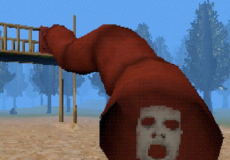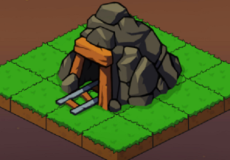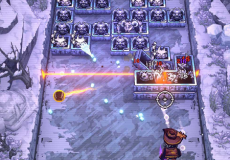
Brother Hai’s Pho Restaurant
Advertisement
Advertisement
Similiar games
Brother Hai’s Pho Restaurant is a time management and cooking simulation game centered on running a small noodle shop. The player takes the role of Brother Hai, who must prepare bowls of pho for a continuous flow of customers, balancing speed, accuracy, and organization. Each order includes specific ingredients and timing requirements, and success depends on maintaining both quality and efficiency. The goal is to complete daily shifts, satisfy customers, and gradually expand the restaurant with improved tools and recipes.
Core Gameplay And Objectives
At the beginning of each day, the restaurant opens with a small set of ingredients: noodles, broth, herbs, and various proteins. Customers appear at the counter with visual order cards that show their preferred bowl composition. The player must quickly select ingredients in the correct sequence and ensure that the cooking time does not exceed the limit. Completing an order successfully earns coins, tips, and reputation points. As the day progresses, new orders arrive faster, requiring precise timing and multitasking.
Systems And Upgrades
The game follows a growth structure typical of restaurant management titles. Between shifts, players can use earned currency to buy better cooking tools, unlock more ingredients, or improve service speed. Equipment upgrades reduce preparation time, while recipe expansions attract higher-paying customers. Managing both the kitchen and resources becomes essential for long-term success.
Main progression elements include:
-
Cooking and assembling pho bowls under time constraints
-
Unlocking new recipes and ingredient combinations
-
Purchasing kitchen upgrades and decorations
-
Meeting customer satisfaction goals to reach the next level
These systems ensure a loop of improvement: every round adds complexity, but also grants opportunities for refinement. Players gradually transform a modest street stall into a well-equipped restaurant.
Interface And Player Interaction
Brother Hai’s Pho Restaurant features an overhead view of the kitchen counter, where all tools and ingredients are clearly displayed. Orders appear at the top of the screen with icons representing customer requests. The interface supports fast actions—tapping, dragging, or clicking—to assemble dishes efficiently. Each completed order triggers immediate feedback: satisfied customers smile and leave coins, while mistakes reduce reputation. The player learns to balance short-term speed with long-term planning, deciding when to focus on upgrades or on mastering new recipes.
Experience And Progression Curve
As levels advance, the pace of the game accelerates. More customers arrive simultaneously, and the number of ingredient variations increases. The player must plan workstation layouts and memorize frequent combinations to maintain rhythm. Despite rising difficulty, the structure remains fair and predictable: every new mechanic builds on previous knowledge. The game encourages consistent performance rather than random chance. The experience highlights coordination, time awareness, and adaptation—key qualities for achieving higher scores and running a smooth virtual restaurant.
Brother Hai’s Pho Restaurant combines systematic cooking mechanics with management planning, turning each shift into a sequence of small, measurable tasks. Every completed order contributes to progress, every mistake offers a lesson, and every upgrade makes the next day more efficient. The focus remains on structured repetition, organization, and gradual mastery rather than competition or speed alone.
Discuss Brother Hai’s Pho Restaurant


















